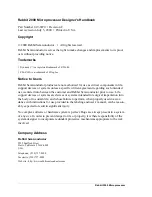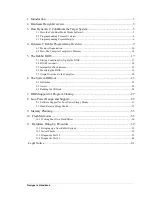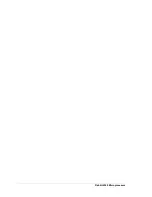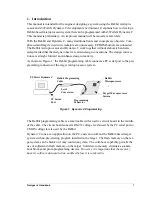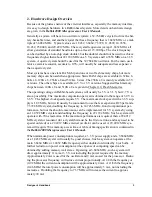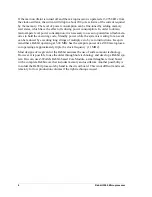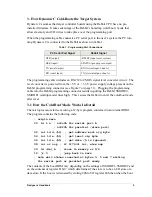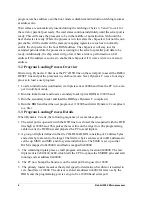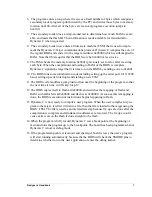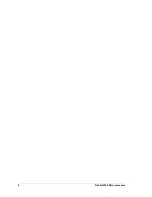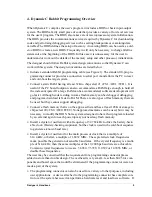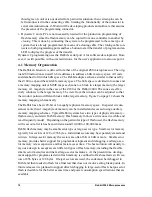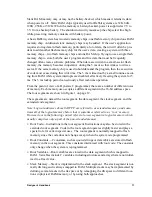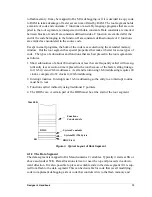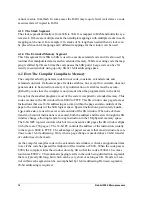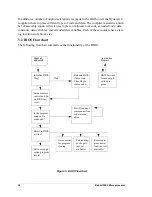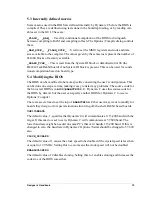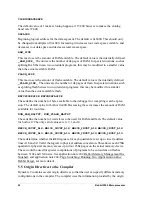
Designer’s
Handbook
3
2.
Hardware Design Overview
Because
of the glueless nature of the external interfaces, especially the memory interface,
it
is easy to design hardware in a Rabbit-based system. More details on hardware design
are
given in the Rabbit 2000 Microprocessor User’s Manual.
Generally
a system will have two oscillator crystals, a 32.768 kHz crystal to drive the bat-
tery-backable
timer, and another crystal that has a frequency that is 1.8432 MHz or a mul-
tiple
of 3.6864 MHz. Typical values are 1.8432, 3.6864, 7.3728, 11.0592, 14.7456,
18.432,
25.8048, and 29.4912 MHz. These crystal frequencies (except 1.8432 MHz) all
allow
generation of standard baud rates up to at least 115,200 bps. The clock frequency
can
be doubled by an on-chip clock doubler, but the doubler should not be used to achieve
frequencies
higher than about 22.1184 MHz on a 5 V system and 14.7456 MHz on a 3.3 V
system.
A quartz crystal should be used for the 32.768 kHz oscillator. For the main oscil-
lator
a ceramic resonator, accurate to 0.5%, will usually be adequate and less expensive
than
a quartz crystal.
Most
systems have one static RAM chip and one or two flash memory chips, but more
memory
chips can be used when appropriate. Static RAM chips are available in 32K x 8,
64K
x 8, 128K x 8, 256K x 8 and 512K x 8 sizes. The 256K x 8 is mainly available in 3 V
versions.
The other chips are available in 5 V or 3 V versions. Suggested flash memory
chips
between 128K x 8 and 512K x 8 are given in Chapter 10, Flash Memories.
The
operating voltage in Rabbit-based systems will usually be 5 V or 3.3 V, but 2.7 V is
also
a possibility. The maximum computation per watt is obtained in the range of 3.0 V to
3.6
V. The highest clock speeds require 5 V. The maximum clock speed with a 3.3 V sup-
ply
is 18.9 MHz, but it will usually be convenient to use the less expensive R25 part and a
7.3728
MHz crystal, doubling the frequency to 14.7456 MHz. Good computational per-
formance,
but not the absolute maximum, can be implemented for 5 V systems by using
an
11.0592 MHz crystal and doubling the frequency to 22.1184 MHz. Such a system will
operate
with 70 ns memories. If the maximum performance is required, then a 29.4912
MHz
crystal or resonator (for a crystal this must be the first overtone, and may need to be
special
ordered) or a 29.4912 MHz external oscillator can be used. A 29.4912 MHz sys-
tem
will require 55 ns memory access time. A table of timing specification is contained in
the
Rabbit 2000 Microprocessor User’s Manual.
When
minimum power consumption is required, a 3.3 V power supply and a 3.6864 MHz
or
a 1.8432 MHz crystal will usually be good choices. Such a system can operate at the
main
3.6864 MHz or 1.8432 MHz frequency either doubled or divided by 8 (or both). A
further
reduction in power consumption at the expense of computing speed can be
obtained
by adding memory wait states. Operating at 3.6864 MHz, such a system will
draw
approximately 11 mA at 3.3 V, not including the power required by the memory.
Approximately
2 mA is used for the oscillator and 9 mA is used for the processor. Reduc-
ing
the processor frequency will reduce current proportionally. At 1/4th the frequency or
(0.92 MHz)
the current consumption will be approximately 4 mA. At 1/8th the frequency,
(0.46
MHz) the total power consumption will be approximately 3 mA, not including the
memories.
Doubling the frequency to 7.37 MHz will increase the current to approxi-
mately
20 mA.
Содержание 2000
Страница 1: ...Rabbit 2000 Microprocessor Designers Handbook Revision C...
Страница 4: ...Rabbit 2000 Microprocessor...
Страница 6: ...2 Rabbit 2000 Microprocesssor...
Страница 12: ...8 Rabbit 2000 Microprocessor...
Страница 34: ...344 Dynamic C User s Manual...
Страница 36: ...34 Rabbit 2000 Microprocessor...
Страница 44: ...42 Rabbit 2000 Microprocessor...


